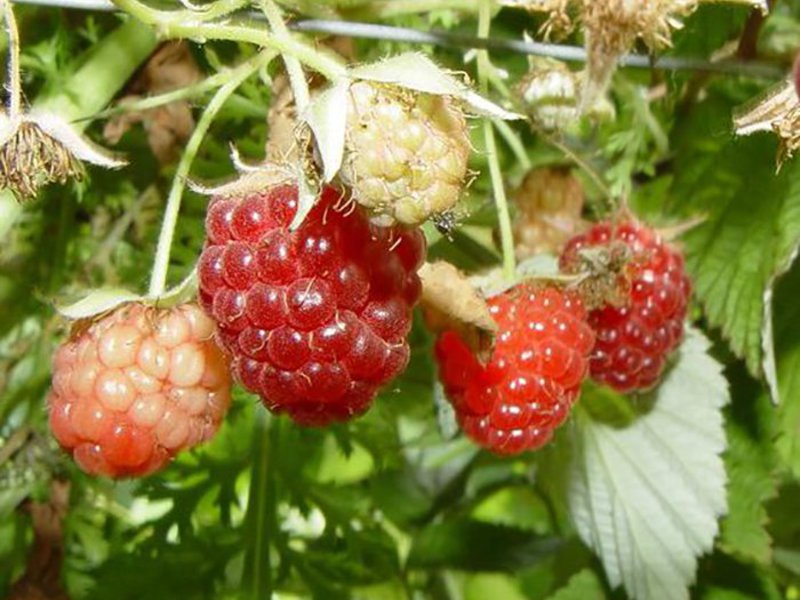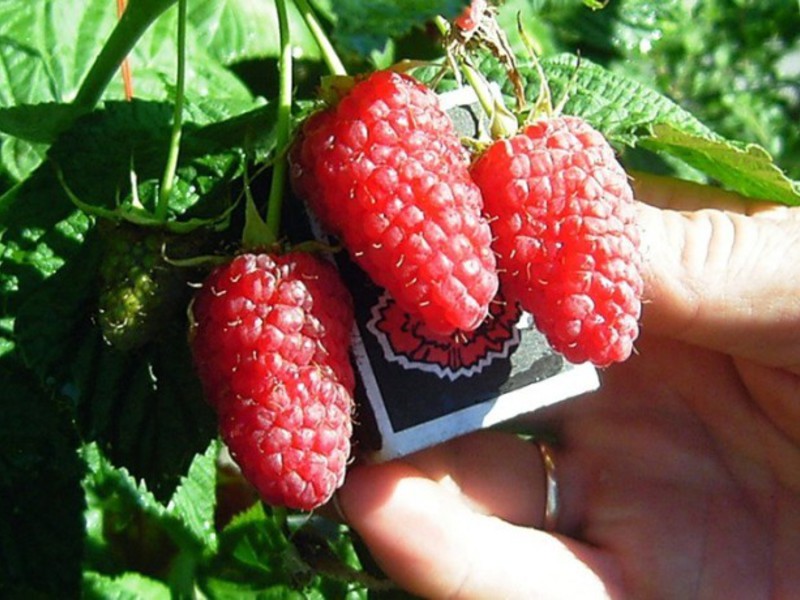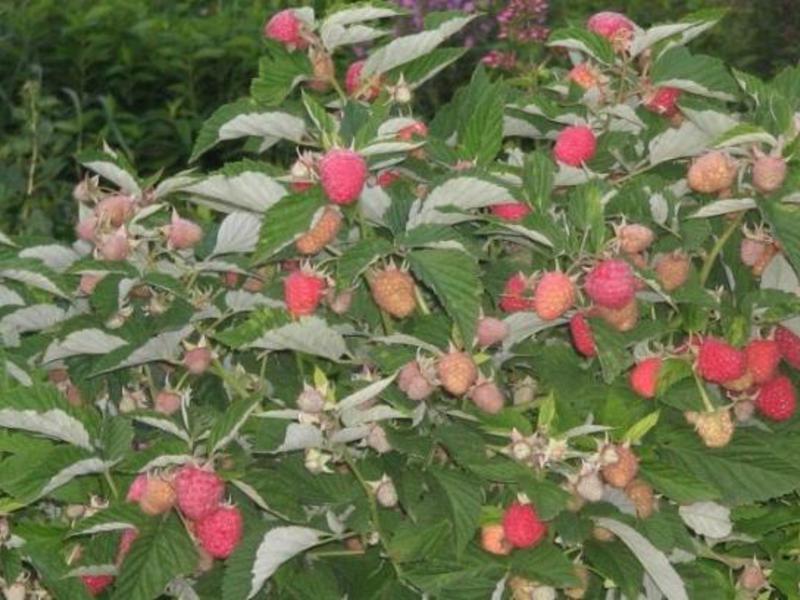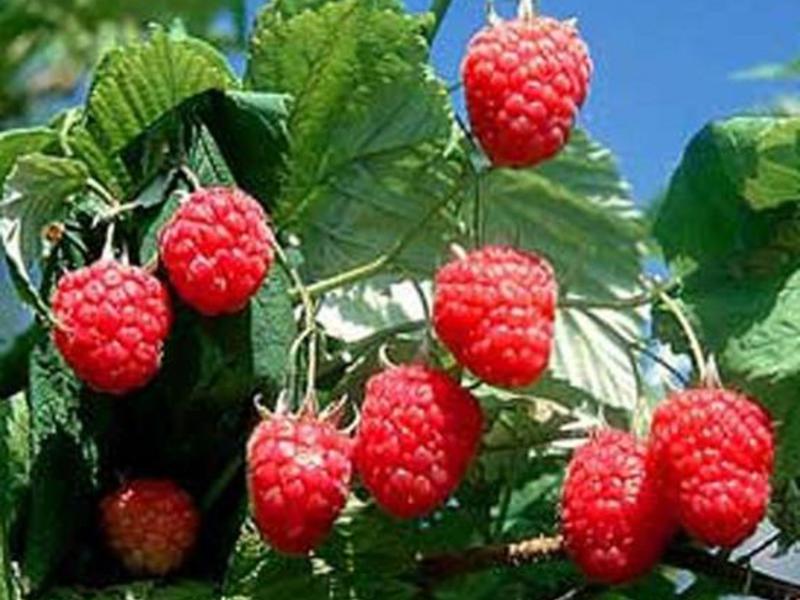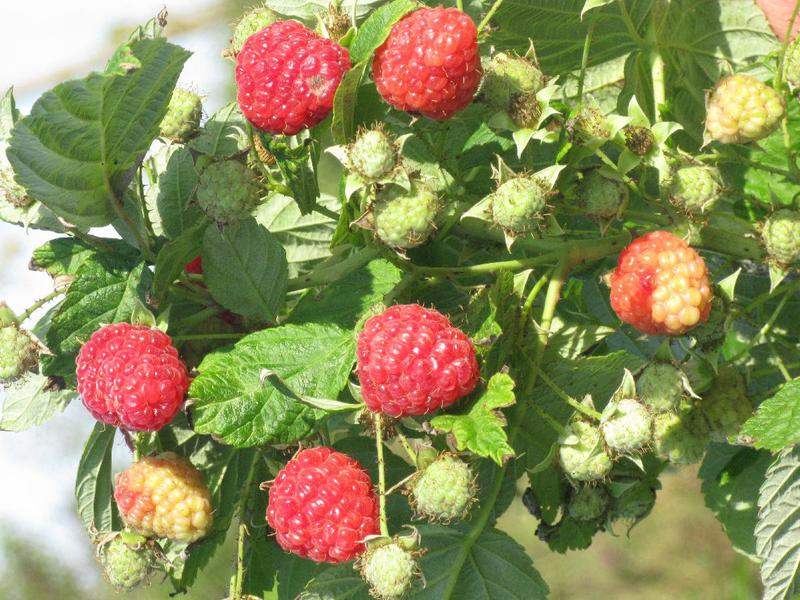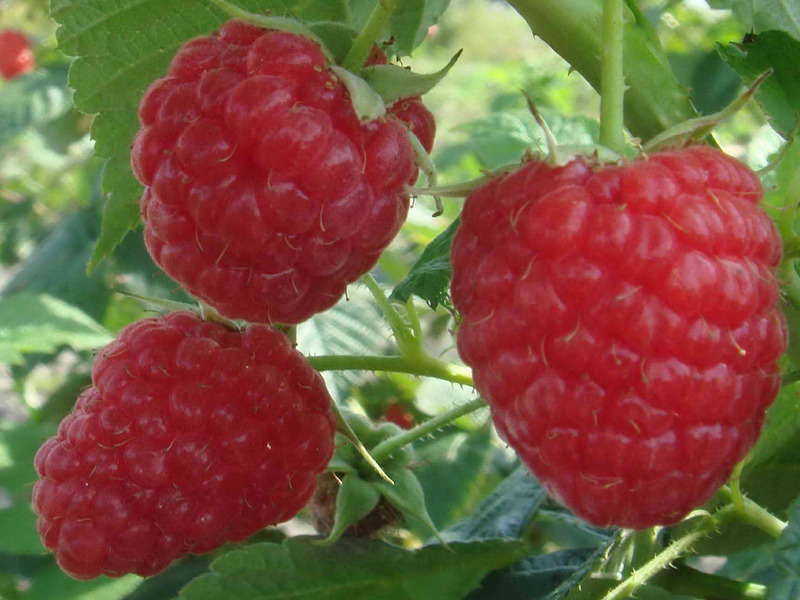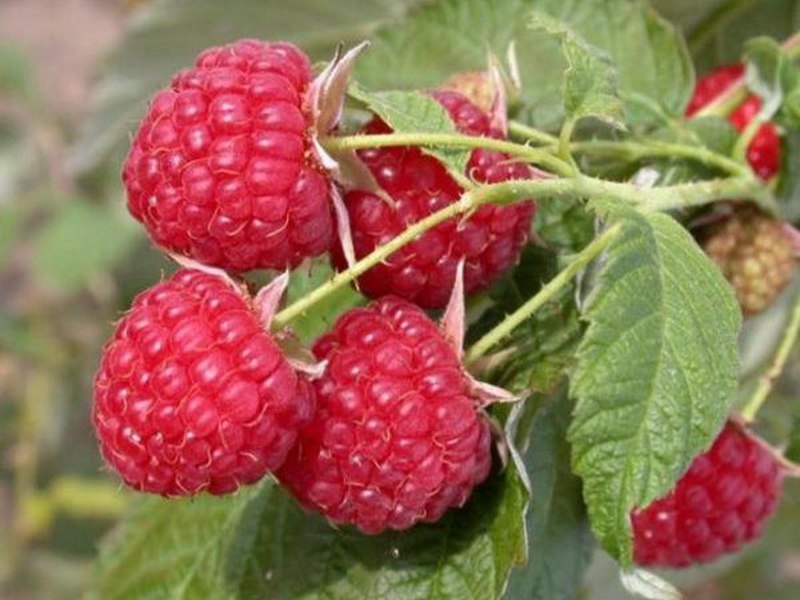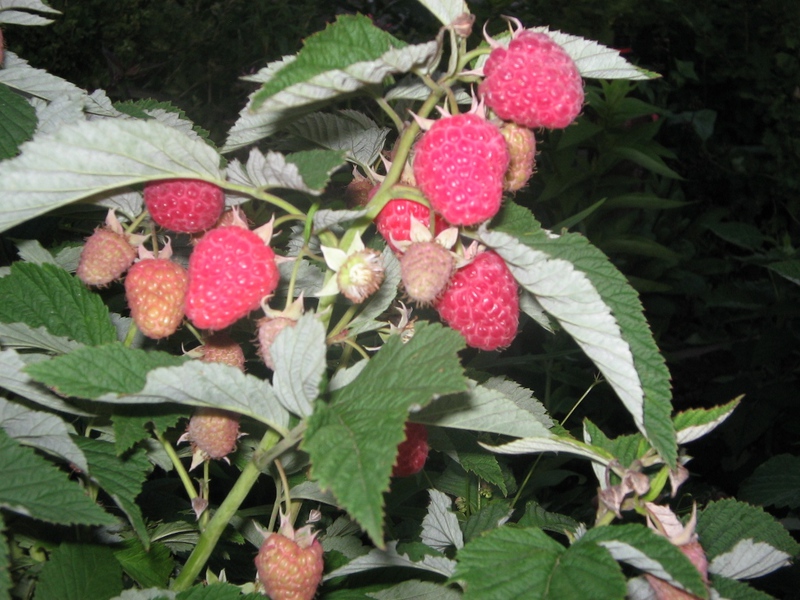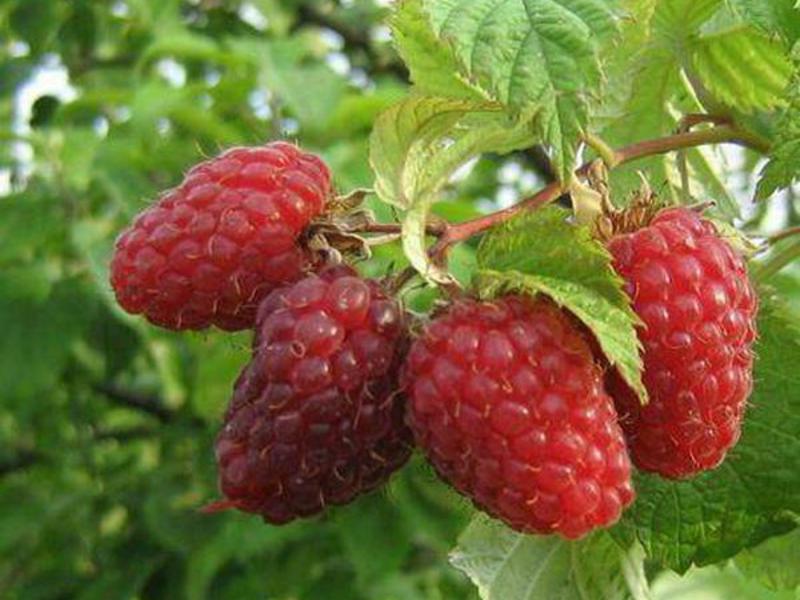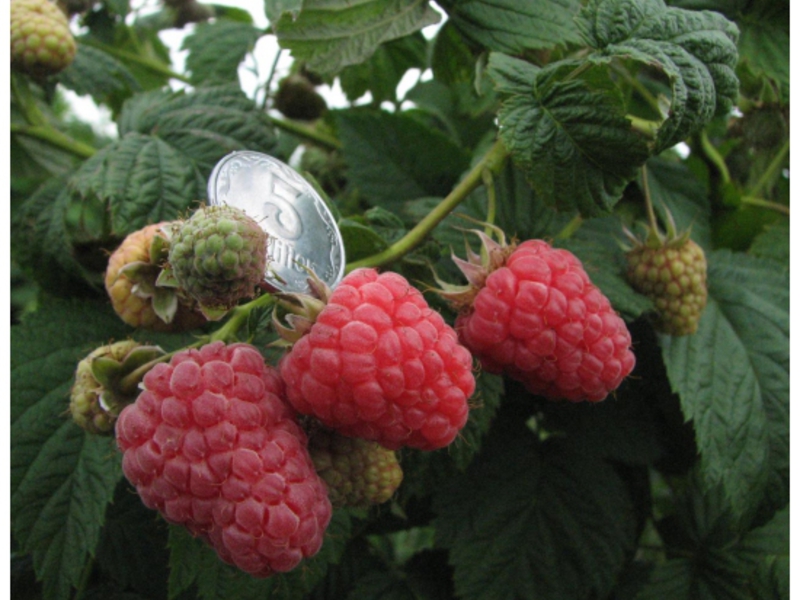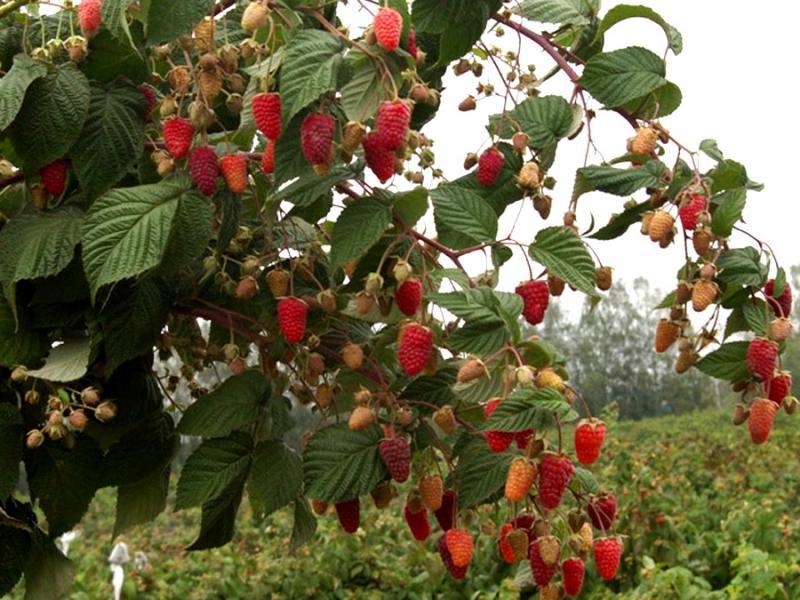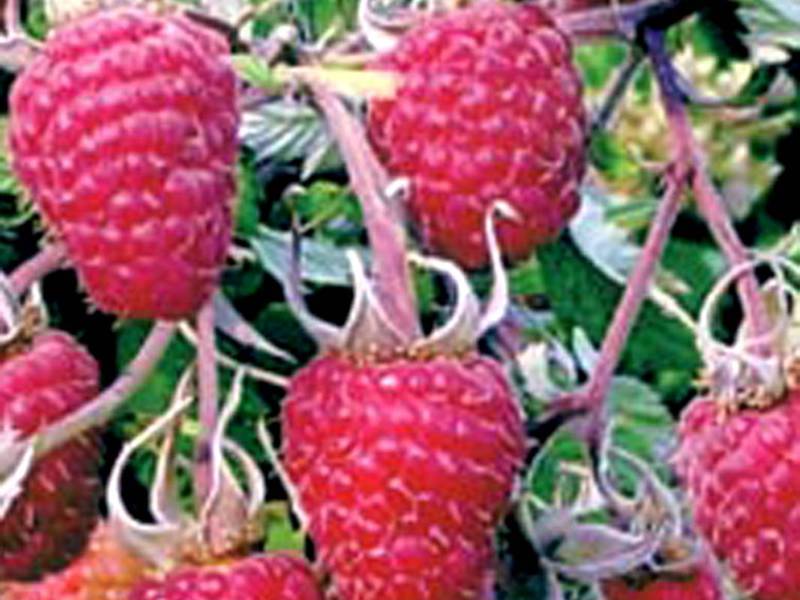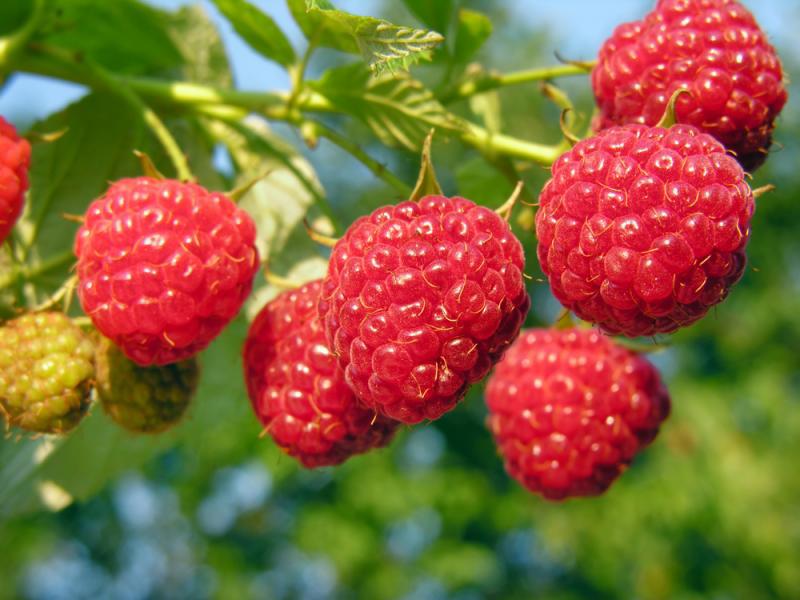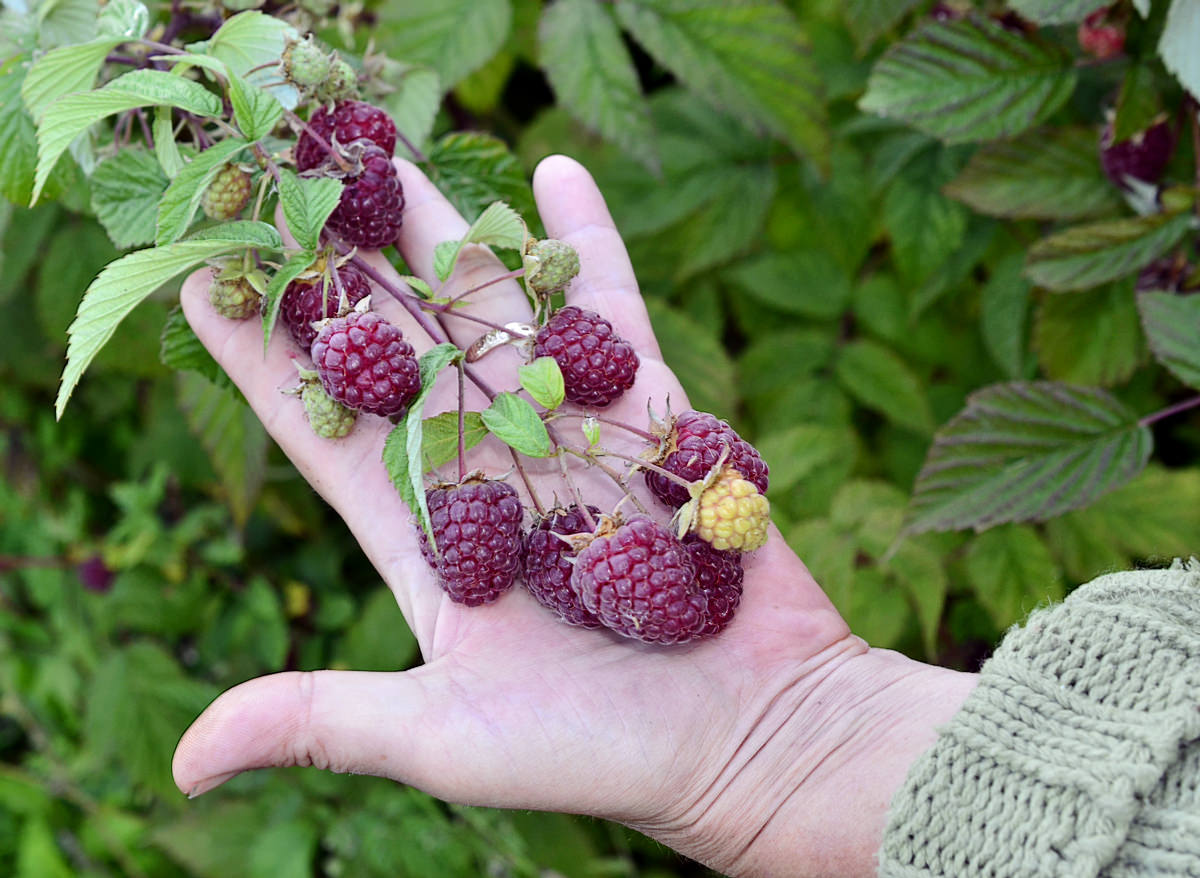Raspberries are loved by both adults and children. This is a sweet berry that can be eaten fresh, or you can cook delicious compotes and jams on its basis, use it to make confectionery and much more.
In nature, there are many varieties of raspberry trees, one of the varieties is the standard raspberry Tarusa. What is remarkable about the variety and how to care for this tree, we will tell below. Also in the article you will find a photo of this raspberry variety.
Types and varieties
Raspberry is a shrub, plant stems on average live about 2 years and grow up to 2 meters. The tree bears fruit in the second year.
There are four main types of raspberries:
- large-fruited - it is distinguished by increased productivity and large fruits;
- ordinary - the variety has reliability in terms of planting, but the harvest will not be plentiful;
- standard - looks like a tree and shoots growing straight;
- remontant - differs in that it gives a crop in the first year of life.
But the raspberry varieties are subdivided into the following categories:
- universal;
- early;
- medium ripening;
- late ripening;
- repairing.
Raspberry Tarusa is a medium-ripening variety and bears fruit in the second part of July.
Description of raspberry Tarusa: photo
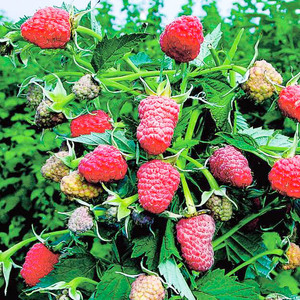 Despite the fact that many call this plant a crimson tree, it cannot be called a tree in the usual sense of the word. But at the same time, raspberry Tarusa is externally significant different from the usual raspberry bush... The stems grow upward and can reach one and a half meters in height, while the outer bushes have a very attractive appearance. There are no thorns on the trunks and leaves, so harvesting and caring for the plant will be very easy.
Despite the fact that many call this plant a crimson tree, it cannot be called a tree in the usual sense of the word. But at the same time, raspberry Tarusa is externally significant different from the usual raspberry bush... The stems grow upward and can reach one and a half meters in height, while the outer bushes have a very attractive appearance. There are no thorns on the trunks and leaves, so harvesting and caring for the plant will be very easy.
Raspberry trees of Tarusa do not need special support, but it is still desirable to tie up plants, if only because of its high yield level. The same shoots, under the weight of the berries, may not withstand, it is better to rip them up or tie the branches.
The berries of this raspberry variety are large and have a pronounced aroma... They are well processed and transported normally. Raspberry seeds are small and are practically not felt in the berry.
This tree is able to withstand not the best weather conditions, is resistant to many diseases and tolerates frosts well, therefore, Tarusa raspberries can be grown even in places where the temperature drops to 30 degrees below zero in winter.
Why is a raspberry tree good?
Raspberry Tarusa, in comparison with other varieties, has the following advantages:
- does not take up much space in the garden or vegetable garden;
- there are no thorns on the stems and leaves;
- high productivity;
- ease of care;
- thanks to the root system, it does not spread throughout the site;
- large fruits.
All these characteristics allow you to grow Tarusa raspberries anywhere, however, before starting it, you need to carefully study the rules and features of caring for this tree.
Conditions for growing a raspberry tree
If you take proper care of Tarusa raspberries and the climate is the most suitable for them, they will bring the harvest twice a year. This variety has a large area of its shoots, so you need to plant it at least a meter apart... If you plan to use the diseased area for its cultivation, then the distance between the rows should be at least 1.5 - 2 meters.Planting new bushes and planting shoots is necessary only in the spring.
Before planting, the soil must be checked for acidity. If the indicator is large, you need to introduce a solution based on lime and groundbait, as well as supply drainage drains. And only after that you can plant raspberries.
Raspberry trees are moisture-loving, but you don't need to water them abundantly either. It is best to form a low embankment and plant a raspberry tree on it. Thanks to this, you will protect it from the death of the root system and rot. If there is heavy rainfall and the soil is too wet, then you need to think in advance how to pump out the water.
When choosing a place for planting Tarusa raspberries, it is better to choose one that is located as much as possible further away from tomatoes, strawberries and potatoes... The fact is that all these species are susceptible to the same pests that can go to the raspberry tree.
To prevent plant diseases, raspberries are treated with insecticides, and the soil is loosened around the shoots, this is all necessary in order to prevent the reproduction of the raspberry beetle, which destroys the fruits and leaves of the plant.
It is advisable to plant this variety in the sunny part of the garden, in a place that is not blown from all sides. The rays make the berries tastier and sweeter, the raspberries will be more fruitful.
What else do you need to know when growing a raspberry tree?
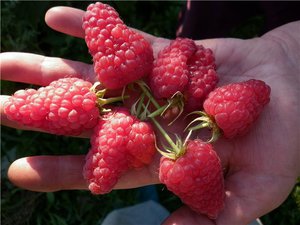 Raspberry Tarusa is well suited as an ornamental plant and hedge. Her leaves have convex veins and attractive relief. And the stem is distinguished by its power, all this will surely rivet the eyes to your site, so it is better to plant raspberries in a conspicuous place.
Raspberry Tarusa is well suited as an ornamental plant and hedge. Her leaves have convex veins and attractive relief. And the stem is distinguished by its power, all this will surely rivet the eyes to your site, so it is better to plant raspberries in a conspicuous place.
In cold climates in winter, take care of protecting the shoots in winter in advance. At this time, rest comes, and the stems lean to the ground, this allows them not to die in the cold and not freeze. You do not need to cover and wrap the plant, so you create an environment on it for the spread of parasites and the development of diseases.
For the correct formation of Tarusa raspberries, it should be regularly trimmed and pinched. In the first season after planting, you need to pinch the main shoot. And the first pruning of a tree is best done at least in May, so that lateral buds managed to form... The grown lateral shoots are pinched again after a year. Pruning is a very important element of caring for raspberries; if you do not pay attention to it, the plant will not grow as it should, and will not produce enough fruit.
How to successfully grow a tree
If you have purchased Tarusa raspberry seedlings, then for its successful cultivation and a rich harvest, you need to remember the following:
- when planting, observe the distance between the bushes at least a meter, and between the rows - up to two meters, respectively;
- for planting raspberries, it is best to choose a well-fertilized soil with low acidity;
- it is better to choose a place for planting on a small elevation, this will not allow water to accumulate and will not allow the roots to rot;
- during fruiting, the soil must be watered well, but excessive watering will be harmful to the tree;
- do regular dressing and mulch the soil, this will contribute to the growth and yield of raspberries;
- if the temperature in the yard drops below 30 degrees below zero, tilt the stems, but do not cover.
All this is very easy to do, if you follow these rules, then grow an excellent variety of raspberries with a rich harvest. Wherein pay attention to the color of the leaves and the appearance of spots on the surface of the plant.
It is very dangerous when the leaves turn white and spots of yellow and brown hue appear. Reconsider the watering regime of the plant, do not allow waterlogging and stagnation of water near the roots. If all this does not help, but the raspberries will need to be transplanted to another place.
How much do the seedlings cost?
 One seedling costs at least 1-1.5 cu. This is a fairly high cost compared to other raspberry varieties.But you should not worry, the acquisition costs will pay off over time, because, as a rule, the yield of such a plant is very rich. And the fruits are also distinguished by excellent taste.
One seedling costs at least 1-1.5 cu. This is a fairly high cost compared to other raspberry varieties.But you should not worry, the acquisition costs will pay off over time, because, as a rule, the yield of such a plant is very rich. And the fruits are also distinguished by excellent taste.
Raspberry Tarusa appeared relatively recently - less than 30 years ago, but has already become very popular among gardeners. She is very attractive in appearance and pampers with a rich harvest. Such a plant is not very demanding in terms of the planting site, the main thing is that there is enough moisture, light and there are no drafts.
It is not so difficult to grow Tarusa raspberries, therefore more and more summer residents prefer to buy its seedlings for their plots and vegetable gardens.
